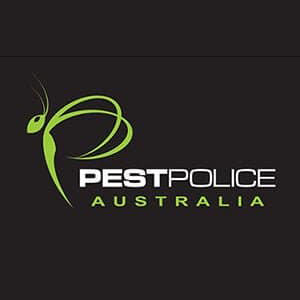It’s important to act fast if you suspect your home is infested with termites. More so when you’re just about to buy one. It pays to be cautious since termites can inflict significant damage before you notice they’re there. For sure, you don’t want your habitat to be a termite colony’s next meal.
Termite-killing treatments can be applied to your home’s exterior—direct chemicals can be used or termite baiting can be set up. However, you may still be uncertain if what you’re doing is effective, which is why we’ll discuss what a termite infestation is, what the signs are, how to get the infestation under control and get rid of these wood eaters for good.
What Is a Termite Infestation?
Termites are a type of insect that feed on wood and can, therefore, cause severe damage to your home.
They are often found in moist, damp areas. Termites can be difficult to detect because they live underground. If you notice any signs of termite infestation, it is vital to take action or contact a professional pest control company as soon as possible before the current infestation gets worse.
Subterranean and drywood termites are the most common types of termites encountered by homeowners, and each poses its own set of problems.
Subterranean Termites
This is the most common type of household termites. Subterranean termites build massive underground colonies and form mud tubes to maintain moisture as they go back and forth between the colony and a food source (the wood in your house). They may spread through a 150 metre long underground tunnel and feed on diverse wood materials found in the environment.
Drywall Termites
Drywood termites, on the other hand, are more challenging to detect. They have a unique biology that allows them to infest homes without coming into contact with the soil. These termites can infest not just the wood used in the construction of the house but also wooden furniture.
Termites love wood, therefore, they munch on the structure and walls of your home. Worth remembering that they prefer woods that have come into contact with the soil, though.
What Are the Signs of a Termite Infestation?
The first step in termite prevention is to be aware of their presence. Termites rarely emerge from the soil, mud tubes, or food sources they burrow, after all. However, certain signs indicate the existence of termites that homeowners like yourself should be aware of frequently.
Here are the top seven termite infestation warning signs to watch out for:
Wood Damage
Termites consume wood from the inside out. Therefore, wood that sounds hollow when tapped or knocked on is usually a sign of termite infestation. A screwdriver can be used to test your wood further as well. It’s not a good sign if you press the screwdriver into the wood and it caves in quickly. A termite infestation is also indicated by rotting wood. Blistering chunks of wood should also be looked for by homeowners.
Mud Tubes
The most destructive termite species, subterranean termites, form mud tubes to provide moisture while traveling between their colony and food source. They’re most commonly found near your home’s foundation, but they can also be located in basements or enclosed spaces.
These mud tubes are roughly the width of a pencil and are made of wood and soil. You definitely have termites if you see them, but their absence doesn’t mean you’re free of them. To be certain, it’s always best to get a thorough pest inspection done.
Bubbling and Peeling Paint
Bubbling paint can indicate moisture buildup, which could indicate water damage or termites.
When termites eat through drywall, moisture seeps into the gap between the surface and the paint, causing the paint to bubble or peel. There are several causes for your paint to buckle, but if this happens in combination with other signs, there’s a huge possibility that you have an active termite infestation.
Swarmers
Alates, also known as reproductives, are young female and male winged termites that are commonly mistaken for flying ants throughout the spring.
Furthermore, when subterranean termites migrate to start a new colony, they shed their wings, which are commonly piled up. Termites could be the source of a swarm of scattered wings.
Head Banging
A peculiar clicking sound may be heard emanating from within your walls. Soldier termites warn danger to other termites by banging their heads on the wood and shaking their bodies when they perceive a threat.
Frass
As they munch through contaminated wood, drywood termites produce wood-coloured droppings. It could be frass or termite droppings. If you observe small, granular, oval pellets on your door frames, baseboards, and windowsills, this could indicate a drywood termite infestation.
Live Termites
While a rarity, there’s a chance you’ll come across some live termites. It’s crucial to tell them apart from flying ants to know what you’re up against, though.
Termites vs. Ants: The Difference
Because of their size, form, and body structure, termites are sometimes confused with ants. However, there are a few key distinctions that might help you determine whether your problem pest is a termite.
Ants have obviously squeezed waists, whereas termites have a consistent width throughout their body. Another significant distinction is that termites have straight antennae, whereas ants have bent, elbow-shaped antennae. Termites have long wings that are all the same length, but ants have a pair of front wings that are longer than their hind wings.
Preventing a Termite Infestation in Your Home
We’ve been asked countless times on how to prevent termite infestation in homes. As a homeowner, you can limit the danger of termite infestation by taking the following preventive measures:
Remove Wood in Contact With the Ground
Termite infestations are common when wood components of a structure come into close contact with soil. In such cases, termites now have easy access to food, moisture, and shelter through earth-to-wood contact. Not to mention direct, hidden access into the structure itself.
Regrading or moving soil or mulch back from the foundation, cutting the bottom off wood latticework, or supporting steps or posts on a concrete base may be required to reduce wood-to-soil contact.
Siding, door and window frames and other wooden structures should be at least six inches above ground level. Termites can attack posts or steps embedded in concrete because they usually reach all the way through the concrete to the soil.
Worse, termites can still attack pressure-treated wood, contrary to common perception. Termites penetrate the wood through cracks and cut ends or build tunnels beneath the surface.
Avoid Moisture Build-Up Near the Foundation
Termites are attracted to moisture, therefore, if the soil near the foundation is constantly moist, they are more likely to be infested. Water should be channeled away with efficiently functioning gutters, downspouts, and splash blocks.
Repair any leaking faucets, pipes, or air conditioning units, and elevate the ground near the foundation, so that surface water drains away from the structure. Tiles or drains may be required in homes with poor drainage. Sprinklers and irrigation systems should be positioned away from the foundation, so water doesn’t pool near it.
Getting Rid and Keeping Termites Away
Handling a termite infestation on your own is rarely promising but you can get started with a couple of options, ranging from known chemical killers to commercially available alternatives.
How to Get Rid of Subterranean Termites
- Termiticide Barriers – Because termites can’t detect the termiticide, they don’t try to avoid it. A termite will die if it consumes termiticide-treated materials. Termiticides can also spread like a virus. When one termite comes into contact with the termiticide, it unintentionally spreads it across the colony, infecting other termites and eventually killing them all.
- Beneficial Nematodes – Many garden pests, including termites, are natural hosts of these microscopic, segmented roundworms. Beneficial nematodes penetrate into their hosts and release a symbiotic gut bacteria that poisons the termite’s blood, killing it in days. Infested sections of your lawn and garden can be treated with a mixture of nematodes, potting soil, and cold water.
- Termite Baits – Foraging termites are drawn to the poison within these baits, which are placed around the perimeter of your home’s foundation. The slow-acting toxin stops termites from growing normally, killing them when they attempt to molt. Because the toxin takes so long to take effect, sick termites will transport the insecticide back to the colony and spread it to other termites.
How to Get Rid of Drywall Termites
- Spot Treatment – Drywood termites can be controlled by drilling and filling holes in painted or varnished wood. Start by drilling holes every 10 inches or so into the termite-infested wood. Once you reach the nest, you will feel resistance. Then apply termiticide to the holes. To finish, fill the holes with putty or a wood patch.
Termite Infestation Getting Out of Control? Call a Professional!
There are different DIY methods for eliminating termites, but none are as effective and successful as tapping a professional pest control company. After all, no amount of DIY tips can be at par with extensive experience, knowledge, and commercial-grade supplies and equipment that a pest exterminator has under the belt.
If you are looking for an established pest control company in Melbourne, know that we’re your trusted partner for all your pest control problems. Contact us now to request a quote!

